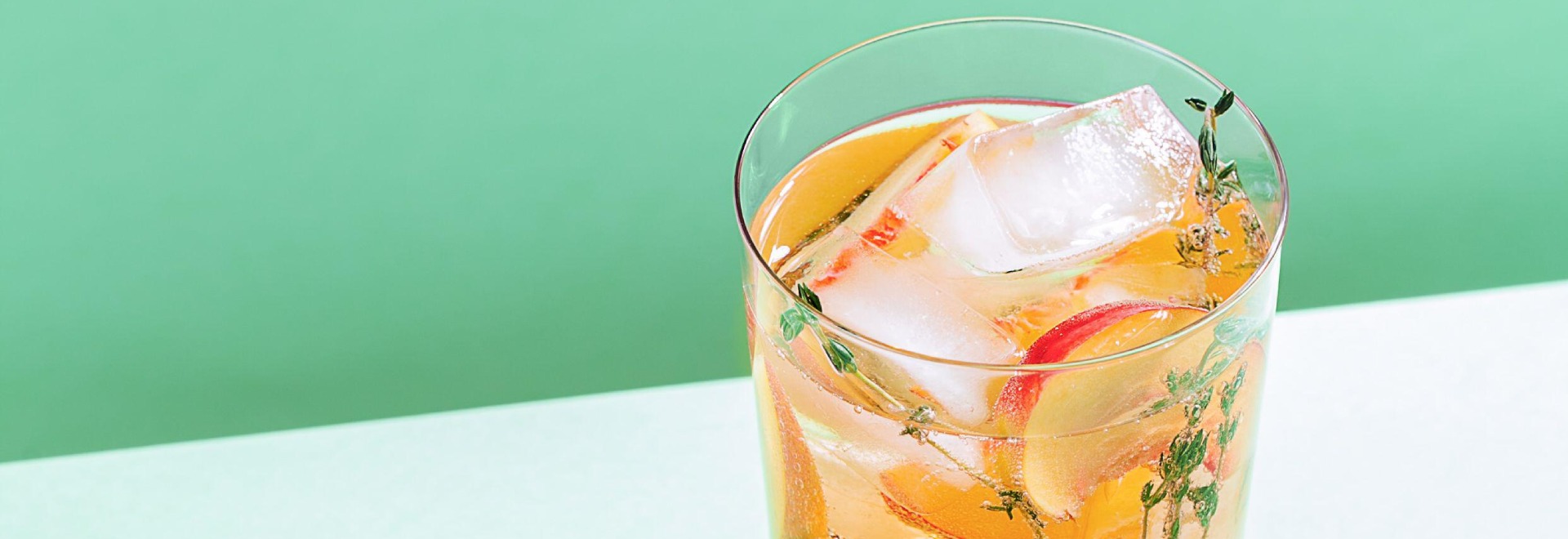Will cold brew tea knock coffee off its perch?
The co-founder of East Forged, Tania Stacey, speaks to New Ground about whether cold brew tea can disrupt the dizzying popularity of its coffee counterpart.
Tania Stacey has always loved iced tea – but for years, she found herself frustrated by the excessive sweetness and lack of flavour sophistication she found in most available on the market.
Given the worldwide availability of iced coffee, Tania and her business partner wondered why more places weren’t offering in-house cold brew tea. Ultimately, they fell on the idea of using traditional beer-making processes to create a new product, promoting tea as the “hero ingredient”.
The result was East Forged, an award-winning company that specialises in cold brew tea.
“Cold brewing avoids bitterness or high astringency while adding some flavour to your daily water intake,” Tania explains. “Also, it brings out a different range of flavour notes in the tea, and that’s why we use the cold brew method at East Forged.”
She adds that even old tea or poor quality tea can “still taste pretty good” when cold brewed.
“Hot extraction will highlight issues very quickly, so it’s used for tea evaluation,” she continues. “In cold brewing, green tea is lightly grassy, while white tea has pronounced hay and straw notes. Black tea brings the sweet fruitiness.”
East Forged refrigerates the tea for between eight and 12 hours. This increases the level of flavour diffused from the tea itself, rather than by any fruit juices or further additives.
Ultimately, cold brew tea is characterised by its smoother, sweeter taste. The process extracts fewer tannins than with hot brewing, avoiding the harsh, bitter tastes associated with both hot black tea and hot brewed coffee.
Tania adds that although it’s possible to cold brew any tea, it’s best to avoid any herbal teas that contain dried fruit rind. Once brewed, the strained, steeped liquid can be poured into a further base liquid or can simply be enjoyed over ice, with herbs or fruit added as optional extras.

Massive potential
In 2020, cold brew as a whole was valued globally at $215 million, with the most prominent market areas being Pacific Asia and North America. Subsequently, in 2021, Starbucks reported that 76% of drinks sold in the first quarter of the year were cold, being particularly popular among younger customers.
Furthermore, cold weather doesn’t seem to dampen demand too much. In fact, Starbucks CEO Kevin Johnson shared that even in the colder months of 2021, 41% beverages sold were cold.
Cold coffee’s popularity among younger consumers has been variously put down to its sweeter taste, its environmentally friendly brewing process, and the way these drinks have been marketed as functional drinks with health and lifestyle benefits.
“This target market is very concerned with what the drink can do for them,” Tania says, drawing parallels with cold tea. “As such, we are very busy telling people that tea, specifically the Camellia sinensis plant, is the natural source for L-theanine.”
Research suggests that this amino acid may have the ability to support relaxation by reducing anxiety levels. Another recent study showed that cold brewing tea releases more polyphenolic compounds compared to traditional hot brewing methods, while also minimising caffeine release.
One study found that 87% of millennials and Gen-Zs drink tea, with an overwhelming 67% opting for herbal and fruity teas over black tea. The less intense caffeine effects of tea are particularly appealing to younger consumers, who may be more concerned with the impact of external factors on their physical and bodily health, as well as the effects of traditional drinks on the planet.
In fact, it’s been found that Gen Z-ers are actually quite comfortable paying more for healthier foods and drinks.
Brewing trouble: Is cold brew tea really a threat?
More than 80% of industry leaders believe that cold brew is the fastest growing product in coffee shops. Cold brew concentrate is already widely used as a base for a variety of ready-to-drink (RTD) beverages, including alcoholic seltzers, energy drinks, coffee cocktails, and canned lattes.
Much like within the drinks industry at large, where there is increasing focus on functional ingredients, the cold brew industry is tailoring its offerings to the wellbeing interests of today’s younger consumers. In fact, there are now also RTD cold teas that contain added CBD, protein, antioxidants, and other supplements.
And, just as how cold brew coffee is now offered on tap at many restaurants, bars, and cafés, the same may soon be true for cold brew tea, as well. It’s easy enough to implement – all that’s needed is a boom in popularity.
This and other aspects of cold brew tea appeal to another desire of younger consumers: convenience. Research already shows that alongside taste and price, convenience is high on the list of Millennial and Gen Z demands.
For Tania, it’s also as simple as taking advantage of the growing market for non-alcoholic beverages that are still fun and trendy at social gatherings.
“It’s time for the ready-to-drink tea beverage to step up for the tea drinkers and create new reasons to drink tea in new social occasions,” she explains.
In the end, although cold brew tea has already been widely accommodated by big name brands, its future popularity probably depends on the investment of smaller businesses. If specialty coffee shops and the like begin to cash in on the trend, the market could experience the same kind of diversification and success seen with cold brew coffee.
“It’s an exciting time for tea, as the market is ready to learn more about this super leaf,” Tania concludes.







